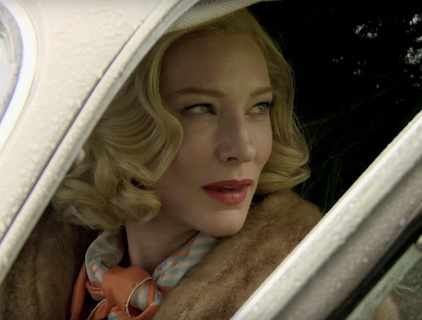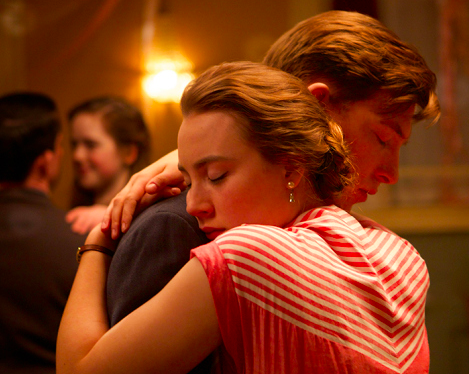
CAROL & BROOKLYN: A TALE OF TWO MOVIES
By Lucie Young
Fasten your seat belts this is going to be a bumpy ride. I’ve waited half my life for someone to make Carol into a movie. The book, written in 1952 by Patricia Highsmith, was a life raft for young lesbians. It was one of the few lesbian love stories with a happy ending. So I was delighted to hear that gay director Todd Haynes was attached, and that the early reviews championed Carol as a masterpiece.
But I can’t agree. In Haynes version, Carol is played by Cate Blanchett as if she were Veronica Lake or some other icon of Hollywood’s golden era; all swishy mink coat, dangling cigarette and scarlet lips. You get the impression Vermouth, not blood, runs in her veins. It is an impression that is magnified by the beautiful sets and the camerawork. The camera dawdles over all the baubles of her life. I even noticed Carol’s brooch, the color of her car and the detail around the top of one of her sweaters.
Four days ago, when I saw Brooklyn, another 50s romance, it brought home what is wrong with Carol. The camera instead of swishing about like Carol’s fur coat, followed the emotional pulse of the story. It caught the nuances of actress Saoirse Ronan’s minutely changing expressions, lingered over a haunting acapella song that spoke of homesickness even though it was in incomprehensible Gaelic and captured the tiny shift, the moment Eilis’s mother’s heart broke.

Unsurprisingly the rave reviews for Carol are largely from male critics (and as 90% of movie critics in America and the UK are male, that’s a lot of rave reviews). The female reviewers, I’ve noted, tend to use terms like ‘chilly’ or euphemisms like ‘hard to warm up to’ in their descriptions of the film. Kate Taylor, a reviewer for Canada’s national newspaper The Globe and Mail outright hated the movie. ‘This is a lesbian romance told exclusively in the vocabulary of heterosexual Hollywood,’ she said. There is a distinct ‘male gaze’ in the way the story is told. Haynes’ Carol is a man’s version of an alluring woman. A cool blond with an Achilles heel, and a heel for a husband. Highsmith’s heroine is a different woman – mysterious and captivating yes, but also more nuanced and complex.
And dear God can we talk about the sex scene. Instead of Highsmith’s tender evocation of the two women’s lovemaking ‘happiness was like a green vine spreading through her, stretching fine tendrils, bearing flowers through her flesh,’ and how Therese ‘trembled violently’, we get a pat love scene which could be from a straight movie (admittedly a fairly dull straight movie). So my suggestion is go see Brooklyn instead. You won’t notice the wallpaper in Eilish’s boarding house, but you will notice how she feels. And you won’t regret it.
© 2016